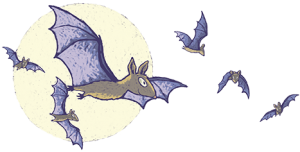Bats act as natural pest controllers. They are thought to be among the most economically important non-domesticated animals.
In the US, for example, bats save the agricultural industry at least $3.7 billion dollars annually in reducing the need for pesticide applications because they eat insects that would normally feed on crops.
We don’t have accurate data for how much Irish bats consume but our two smallest bat species, both pipistrelles, whose populations are thought to number about 1 million each, consume their own body weight (5g) in insects every night.
So, if we multiply 5g by two million we can see that across Ireland these two species may consume up to 10,000kg of insects in one night alone!
Bat Conservation Ireland has drawn up some guidelines for encouraging bats to farmland using bat boxes.
Some considerations concerning bats and farming include:
- Hedgerows and trees – most bat species prefer to fly along hedgerows and tree lines. Hedgerows that are allowed to grow over 2m in height are more useful for bats. Gaps of greater than 10m can be problematic for some species to cross.
- Wetlands, ponds and streams – these habitats are important for insects. Infilling, draining or pollution of these habitats lessen their usefulness for bats.
- Old farm buildings – bats often roost in old stone buildings, sometimes in crevices and cracks in the stone work.
- Dead standing timber can be used by bats for roosting so should be retained where it does not pose a risk to traffic or safety.

